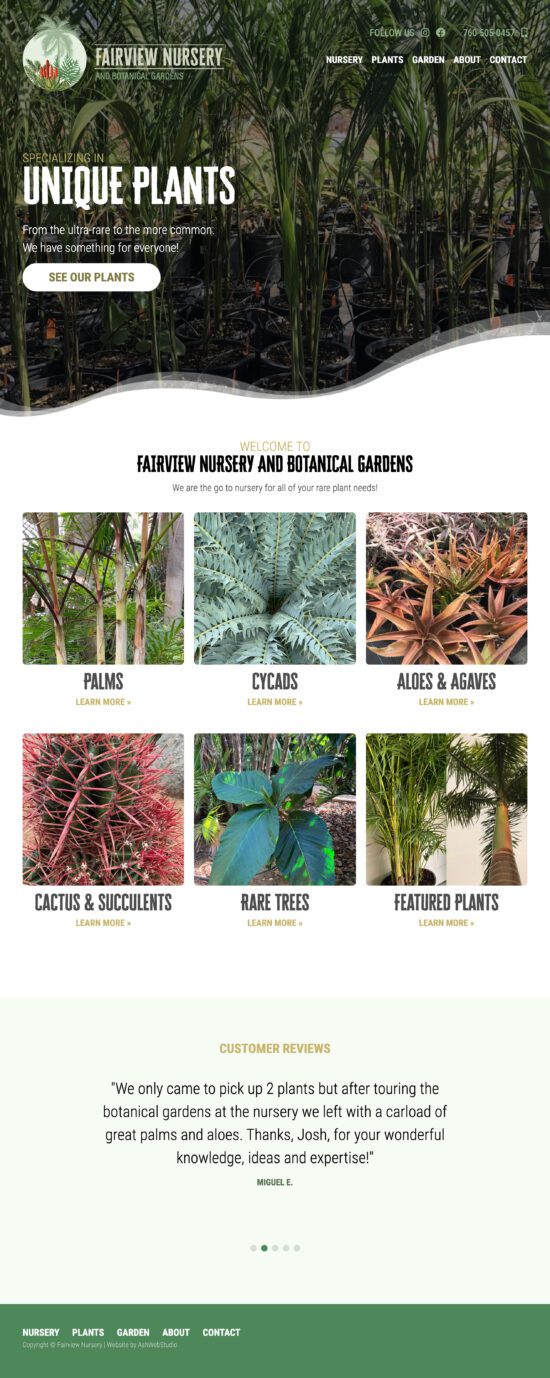
In 20 years of making websites for small businesses, I have seen many fads and trends come and go. From design to marketing strategies, the online world has grown and evolved a lot in that time. Everything is changing very quickly these days, especially with AI, and some things that worked just a month ago no longer work today. What worked for a friend’s business may not work for yours as each industry or niche will have different requirements. Many small businesses know they need a quality online presence but aren’t quite sure they are making the most of their limited marketing budgets.
Before diving in, it’s important to note that there is only one single metric that determines if you have an effective website: Does your website help your business grow?
In this article, I am going to cover fundamental principles that I believe are essential for building an effective website today and for many years to come.
Professional Web Design
First impressions matter. A lot. They can even help a user rate a website better even if other aspects of it are not great. People like things that look nice, such as my wife who will pick a bottle of wine solely because of the design of the label on the bottle.
“…a decision on aesthetics is made as early as 50 milliseconds into visiting a site, and rarely changes if you give people more time.”
Gitte Lindgaard and her colleagues, First Impressions Matter: How Designers Can Support Humans’ Automatic Cognitive Processing
Business competitors: A website comparison
Below are two websites servicing the same niche in the same geographical location. While no guarantee on the quality of the business or products they sell, I think it’s clear which one instincitvely feels like a more reputable, professional business worth giving money to:


Should you use a template or custom web design?
When it comes to creating a website, many people consider the idea of using a premade template from a service like GoDaddy, Wix, or Squarespace. While premade templates can be tempting due to their convenience and cost-effectiveness, a custom design can offer numerous advantages that can make it well worth the investment.
One of the primary benefits of a custom web design is that it allows for a more unique and tailored website specific to your business and target audience. Premade templates are often purposefully made generic enough to cover a wider range of use cases. As a result, many look very much the same as most other websites your potential customers are looking at which doesn’t leave a lasting impression. On the other hand, a custom design can have graphical elements or functionality that separates you from your competition while being optimized specifically for your target audience, creating a user experience that is tailored to their needs and preferences.
Furthermore, a custom web design can be optimized for conversions, which is essential for any website looking to drive traffic and generate leads. Custom designs can take into account the target audience’s behavior, such as how they specifically interact with a website, what elements are most important to them, and what actions they are most likely to take. This allows for the creation of a website that is more intuitive, user-friendly, and ultimately more effective at achieving its goals.
Custom designs also allow for greater flexibility and scalability, as the website can be designed with future growth and changes in mind. In contrast, premade templates can be limited in their functionality and may require significant customization to accommodate future changes or additions to the website.
Does it work on mobile devices?
Having a website work well on mobile devices has been important for many years now. It’s now so commonplace and standard I almost didn’t feel the need to even mention it – but it’s worth noting as there are still many sites that are not responsive or work well on smaller screen sizes.
Quality Content and Information
One of the most crucial elements of a successful website is high-quality content. You can have the most innovative, unique-looking website that fails because of poorly organized and written content.
Your home page introduces all the important stuff
The home page of your website is the most visited page on your entire site and thus the most important. It’s your primary opportunity to impress a user and turn them into a customer. Here are the principles I recommend every business incorporate into their website’s home page by introducing these key concepts:
- Who you are: Most often this is accomplished with a logo in the header, usually top left.
- What you do: Don’t assume that everyone on your site knows exactly what you do, especially if you offer a unique take on a specific service. Think of a landscaper that works solely on sprinkler systems: They should include clear messaging right at the start emphasizing this focus.
- What makes you unique: There are likely many other businesses you are competing with, so it is vital to explain what separates you from everyone else whether it be customer service, pricing, uniqueness of your product, etc.
- Social proof: Many people trust others, especially when choosing a business to work with. This can take the form of customer reviews, testimonials, case studies, social media followers, industry awards, and endorsements from experts or influencers
- Call to action: Usually at the end of the home page, the user has been given some good information and may be ready to do business – so make it easy for them! A clear call to action, a link to a contact form, phone number, or “Buy Now” button are all examples of a call to action.
In general, a user should be able to get a significant portion of the information they need to make a decision to contact or purchase from just the home page. If they want to dive in further to learn more specific details, make it easy to get to the supplemental pages of your site.
Navigation makes it easy for users to find what they want
The main navigation, usually in the header or top of your website, should include simple, clear labels that make it easy for the user to understand what will be on the page should they click on it. It can be tempting to use fancy words or unique lingo, but that may confuse users more than “be cool.” By providing an intuitive navigation structure that is simple to understand, you can help users quickly and easily find the information they are looking for without much mental effort.
In addition to improving the user experience, a clear and concise main navigation can also benefit your website’s search engine optimization (SEO) efforts. Search engines use website navigation structures to understand the site’s hierarchy and determine which pages are most important. By organizing your pages into clear categories and using simple labels for your navigation links, you can help search engines understand the purpose of each page, making it easier for them to crawl and index your site. This can improve your site’s chances of ranking higher in search results, making it more visible to potential visitors and driving more traffic to your site.
Use visuals to help explain complex concepts
One of the challenges of creating a website is explaining complex concepts in a way that is easy for visitors to understand. While text-based explanations can be effective, visuals are often more powerful and can help convey complex ideas more quickly and effectively. By using visuals to help explain complex concepts, you can make your website more engaging, increase comprehension, and reduce bounce rates.
- Video: An incredibly versatile medium that can be used to explain complex concepts, demonstrate products or services, and provide engaging content for visitors and can also be re-used on many social media platforms for additional marketing efforts.
- Infographics: Visual representations of information that use graphics, charts, and other visual elements to convey data in a way that is easy to understand.
- Images: A staple of any website, images can be used to demonstrate step-by-step instructions, illustrate abstract concepts, and make content more engaging.
- Animations: A dynamic and interactive way to explore complex ideas, animations can be used to demonstrate a process, show how a product works, or illustrate abstract concepts in a way that is engaging and easy to understand.
Calls to action turn a user into a customer
Call to actions (CTAs) are not just for the home page but should be included throughout every page of your site. One of the key reasons CTAs are important is that they help guide visitors toward a specific action you want them to take even if they came to the site for another reason. This makes them the final piece of the puzzle in making your website effective.
For example, imagine someone researching the best type of weed killer and landing on an article from a local landscaper about weed removal techniques. At the end of the article or page, a call to action such as “contact us about our affordable weed removal services” could take that user from research mode trying to learn how to do it themselves to a customer paying the business to do it instead.
Analytics and Data
You can’t know if a website is effective unless you have analytics or data to prove it. I’ve heard many, may times “I think my website works?” But the reality is this means nothing.
Tracking website analytics is essential for understanding how your website is performing and how visitors are interacting with your site. It can give you useful information such as which pages are being visited, how long users stay on the website, geographical locations, devices being used, and so much more. Add conversion tracking events in your analytics, you can see precisely what the most effective elements of your site are or where there is room for improvement.
So is your website effective?
Every business knows they need a website, but doesn’t focus on making an effective website. “If you build it they will come” is a major fallacy in the online world. I have outlined how custom web design, quality content, and good analytical data analysis are cornerstones of having an effective website.
If you need help getting started or want to maximize your website’s potential for business growth, contact us and we can discuss your specific needs and help do all the hard work for you. (You just read this article’s CTA, did it work?)